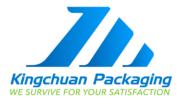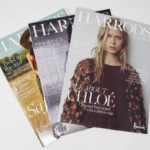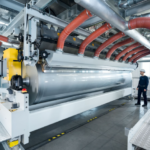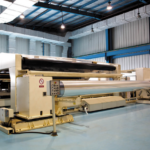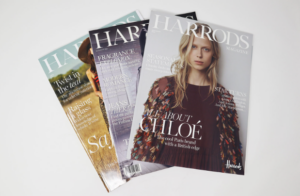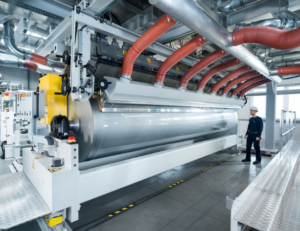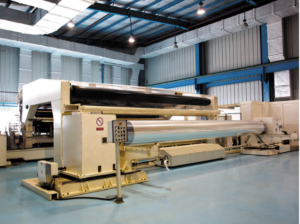At present, flexible packaging has become the most significant part of the food and beverage industry. It is used in a wide range of forms involving sealable zip-lock pouches, stand-up or lay-down pouches, and so on.
This packaging significantly minimizes the probability of spoilage and increases its shelf life. With the help of Flexible packaging, the handling of fresh products has become easier than ever.
The advantages of flexible packaging are limited to the functional values and fairly wide to add an artistic appeal to the packed goods.
Challenging in a consumer-centric market, brands require making sure that their design ticks multiple checkboxes involving factors such as accessibility, brand recognition, excellence, and so on.
Here at Kingchuan, we frequently ask about applying printing technologies for flexible packaging materials.
It does not simply need selecting the accurate packaging material but also the correct printing procedure. This article will assess the various printing applications for flexible packaging supplies.
Scroll down to learn more about the printing procedures for flexible packaging.
Different Methods for Printing on Flexible Packaging Supplies
There are four primary methods of printing that can be applied on flexible packaging films, including:
- Flexography
- Digital Printing
- Rotogravure
- Lithography
1. Flexography
Flexography or flexo is a printing technology that employs a flexible plate rather than a solid one.
It is a newer embodiment of relief printing. It is an extensively used printing technique. Printing on BOPP films can be effectively performed through flexography. BOPP films can firmly adhere to the inks of printing.
Typical Uses
Flexography printing methods are found all over the packaging industry for printing text, graphics, and images on non-porous supplies used for numerous food packaging applications.
Frequently used flexible packaging materials that employ flexography involve:
- Plastics
- Stand-up pouches
- Corrugated boxes
Advantages of Flexography
- Lower tooling costs
- Less expensive per unit
- Can employ both water and oil-based inks
- Quicker turnaround time
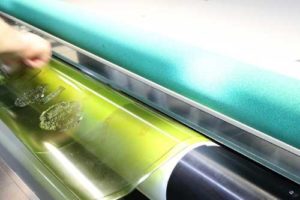
Flexography Printing on Plastic Films
2. Digital Printing
It is an ink-jet-based printing procedure. In this type of printing, the graphics and branding essentials are applied directly on plastic films like BOPP, BOPET, BOPA, etc.
Current digital printing wipes out the requirement for cardboard and labels inserts. It led to a significant decrease in waste, lower inventory necessities, and a faster rate of market dynamics.
Furthermore, the digital printing method for flexible packaging now permits changeable and dynamic content for flexible packaging printing uses.
It allows a wide range of graphic and text applications for segments of customers and buyer personas.
Typical Uses
- Labels
- Prototypes
- Corrugated boxes
- Folding cartons
- Film (BOPP, BOPA) for flexible packaging
Advantages
- Lowest to zero tooling fees or set-up costs
- Low minimums
- Faster turnaround times (less than a week)
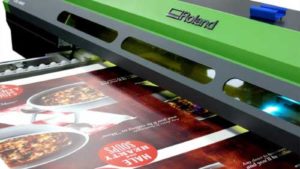
Digital Printing on Packaging Films
3. Rotogravure
This printing method engraves graphics onto a form, plate, cylinder, or another surface before applying to the absolute substrate.
With the gravure printing procedure, text, graphics, and other images are imprinted upon the surface of an image carrier like a cylinder or plate.
Typical Uses
This method of printing is used for applications including commercial printing of:
- Magazines
- Newspapers
- Cardboard boxes
- Some types of flexible packaging(stand-up pouches)
Advantages
- Can effortlessly print photo images
- Best print quality
- Printing cylinders last a long time
- Can feasibly add PMS colors to the 4-color process
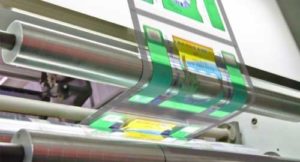
Rotogravure Printing
4. Lithography
The lithographic printing method employs a graphic prepared from oil which is then strained on the apex of a level lithographic plate. Then the plate is treated with acid.
The piece of the lithographic plate that remains undefended by the oil results in the engraving of the image. Subsequently, water is applied to the plate leading to the etched areas retaining water.
Then an oil-based ink is applied to the surface of the lithographic plate. The ink only sticks to the graphic.
In the last step of this procedure, the ink is moved to a blank substrate. It leads to the ultimate lithographic print of the graphic design.
Typical Uses
Lithography is not generally used for printing straight upon flexible packaging materials like biaxially oriented polypropylene film (BOPP) or Polyester films (PET).
It is usually published upon labels later applied to flexible packaging supplies for shipping or other instructional functions.
Advantages
- Good print quality more than just four-color processes is typical.
- “Retail” print quality for customer products like food boxes, multi-media/electronics boxes, and cosmetic boxes
- Specialty coatings can be employed for “superior perceived value” like matte soft-touch or super high gloss.
- Color gradients in the graphics are flat and not prominent.
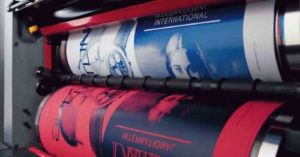
Lithography Printing
Which Is an Effective Printing Type for Your Flexible Packaging Materials?
When selecting types of printing for your flexible packaging materials, you will desire to meet and talk about your packaging supplies with your preferred printer.
Based upon what kind of packaging film you are employing in combination with your graphic, design, and textual elements, one type of printing might be better than another.
Flexography is one of the perfect procedures employed to print on plastic film substrates, including:
- Rigid vinyl PVC
- Polypropylene or BOPP
- Polyester (PET)
If price is the main factor and you do not have an effective financial plan for printing, flexography provides a low cost and speedy turnaround time.
Though, the image quality is not the finest and often leads to banding problems with gradients.
Conversely, if you have a more significant account and want the best quality with no banding, lithography might be the best option because it produces outstanding quality images.
Unluckily, lithography is frequently one of the most costly types of printing.
If you are uncertain where to begin in your pursuit to select the best printing choice for your flexible packaging films, it would be well advised to talk to at least 3- to 4 vendors.
Which Packaging Film Offers the Best Printing Results?
It is possible to perform printing on almost every type of flexible packaging film like BOPP, BOPET, BOPA, Aluminum foil, etc.
However, BOPP film is considered as the best one among these. BOPP film offers a smooth surface for printing. The printing inks can bind strongly to this film.
You can see our blog, ‘How to print on BOPP films?’, for more information.
Conclusion
The printing method that one selects to use is based on numerous factors, including design, budget, images, and graphics.
We at Kingchuan Packaging, being a trusted associate in innovation, ensure that your number of choices to select from does not face the constraint of an unsuited material substrate.
Therefore, our experts have manufactured a wide range of flexible packaging films appropriate to numerous printing procedures.
These films are accessible in varieties such as metalized, Pearlized, transparent, opaque, etc. so that you can design your product in a user-friendly way that reflects the core of your brand.
